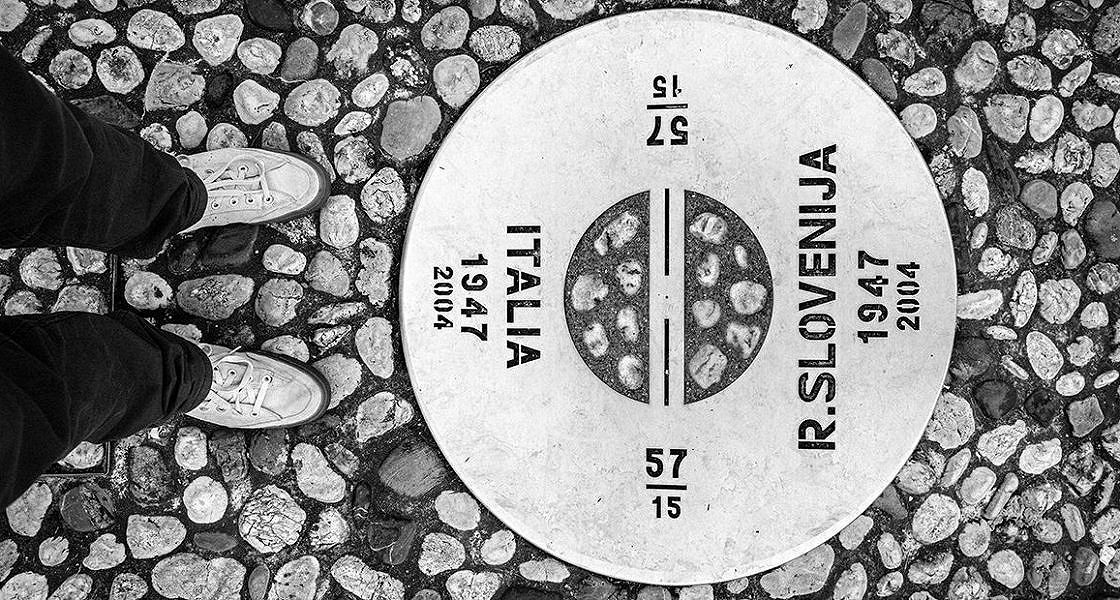Open borders project
11.4.2024

The scientific project Open Borders, led by Borut Klabjan as the main researcher, examines the development of cross-border cooperation from the end of the Second World War to the present day, focusing on the reconsideration of European history during the Cold War. The time has come to overcome the traditional established theories of a clear European separation as symbolized by the Berlin Wall. A decentralized analysis of recent European history will show us that the question of a divided continent needs to be transformed. The ultimate goal is therefore to challenge the established vision of two separate Europes, "East" and "West", from a new perspective.
Our border area was not the only one in Europe that offered a kind of transnationality during the Cold War. The Benelux countries were the first to remove borders in Europe. Similar cases can also be found in the Eastern Bloc, for example between Poland and East Germany or between Czechoslovakia and Hungary. The special feature of our area between the Alps and the Adriatic is that the transboundary took place between countries that had different political systems and were part of different military alliances. The Alps-Adriatic region is a historical area shared today by Austria, Italy, Slovenia and Croatia. During the Cold War, however, it was divided between socialist but non-aligned Yugoslavia, capitalist but neutral Austria and Italy, a member of NATO.
The Open Borders project uses a multi-layered approach to the study of European cross-border practices, recognizing individuals, regional authorities and countries as important actors who participate in the creation of cross-border initiatives at different levels. Since the research is based on different sources, different methodologies are used to study them. On the one hand, the researchers take into account and study various diplomatic dispatches and communication at the highest level, and on the other, they also conduct conversations with ordinary people who lived through this period and take into account their experience of the international space. It is also important to analyze various other sources, such as audiovisual works and photographs, including those taken by ordinary people.
The international study of cross-border initiatives, which is the core of the project, is based on three interrelated research categories – people, places, practices.
PEOPLE – agents of cross-border practices
The history of transnational cooperation has been the subject of constant negotiations and coordination between states, regions, municipalities, local associations and individuals who have tried to define and redefine what cooperation is. It is necessary to investigate the ways in which the demands and initiatives of various actors shaped the local actions and responses of the states. At the same time, it is necessary to collect the life stories of individuals in order to think more deeply about the role of factors that come from oral sources and private collections with written personal narratives.
PLACES OF CROSS-BORDER INTERACTION
Cross-border cooperation does not only involve people, but also has a spatial dimension, as it always takes place in a specific location. The elements of this cooperation work in physical spaces that have their own specifics. Despite the non-linear development of interstate relations, these Cold War places incorporated the transnational dimension of local exchanges and shaped the everyday experience of the Cold War. An interdisciplinary approach that includes history, sociology and anthropology will make it possible to study the moment in which these places become spaces of continuous interaction without national qualification, thereby transcending the national dimension. A combination of oral sources and archival material from local and national archives will be used to reconstruct the creation and evolution of spaces of cross-border interaction.
CROSS-BORDER COOPERATION PRACTICES
In what way did these forms of cooperation take place? How was everyday life on the border related to legislation? All these questions relate to specific agents: who participated and with what expectations? What are the frameworks, methods and facilities used for interaction in transnational cooperation? Here it is necessary to question the entrenched understanding that transnational cooperation involves only the mobility of people, goods and capital. The example of the Alps-Adriatic region in the twentieth century particularly calls this vision into question and calls for an additional analysis of the mobility of states and their borders.
Website of the project: https://erc-openborders.eu/
Borut Klabjan is a historian, research associate at the Koper Scientific Research Center and associate professor at the Department of History of the Faculty of Arts (University of Ljubljana). He graduated from the University of Trieste and received his doctorate from the University of Ljubljana. He studied at universities in Bratislava, Prague and Venice. He was a Humboldt Scholar at the Institute for Southeast Europe of the Humboldt University in Berlin, a visiting fellow at the Leibniz Institute for East and Southeast European Studies in Regensburg, and a Marie Skłodowska-Curie Scholar at the European University Institute in Florence. He mainly deals with political and cultural history and border issues in Europe in the 19th and 20th centuries, with a special emphasis on the area of the northern Adriatic and Central Europe.





